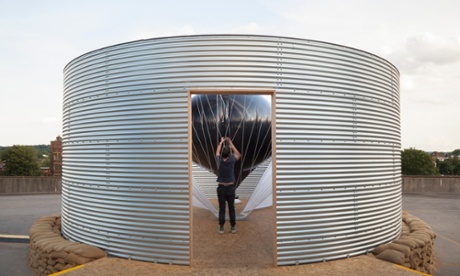
City planners used to fly balloons over the sites of proposed skyscrapers in London, to gauge their impact on the surrounding area. Hundreds of feet in the air, the balloon was a visible, addressable reality, something which could be observed and argued with. It’s a stark contrast to the way in which most decisions about the capital are taken now, whether that’s the enforced sale of peoples’ homes for the Elephant and Castle development, or the conception of the ArcelorMittal Orbit sculpture in a cloakroom at Davos.
Londoners have little say as to what happens on the skyline, and increasingly even less at ground level, as ‘public realm’ piazzas proliferate, patrolled by private security guards, and every movement is tracked by cameras.
Take the Renew ‘spy bins’ in the City of London, those most banal pieces of urban infrastructure revealed last August to be secretly recording the movements of every Wi-Fi-enabled passerby. Or London’s Congestion Charge camera system, installed in 2003 with the explicit promise that it would only be used for tolls, but which has been transferring full details of every vehicle movement to the Metropolitan Police since 2007 – data which the Met now claims it has unrestricted access to.
Technology’s invisibility is often mirrored in the illegibility of planning and zoning laws. A particularly cold-hearted moment came in October 2011, when the Occupy London protesters targeted Paternoster Square, just to the north of St Paul’s Cathedral. Once home to the free presses of London’s publishing industry, following its redevelopment in the early noughties, Paternoster Square is “public space” – but not actually public. Visitors – occupiers or otherwise –were greeted with signs stating that “Any licence to the public to enter or cross this land is revoked forthwith”, and at one point the entire space was not only blocked off, but actually filled in, with metal barriers.
It’s at such moments that the real structures of city life become visible: a matrix of permissions and observations, many of them unreadable most of the time. But while technology, as in the case of the spy bins, is often used to occlude these practices, it also has the potential to unlock and reveal them.
It’s in this spirit that I am returning to the practices of the planners, and flying a balloon over London. Every summer since 2007, Bold Tendencies has transformed the rooftop of an underused multistorey car park in Peckham, and this year it is the setting for The Right To Flight, an installation asking questions of – and trying to suggest answers to – some of our more pressing contemporary concerns.
The project’s name is taken from an 1856 book by the Parisian photographer and balloonist Nadar, who argued that man’s destiny lay in the heavens, and not only would it enable intercontinental travel and communication, it would dissolve international borders and put an end to wars as the petty concerns of nation states fell away beneath the aviators. But Nadar also took the first aerial photographs in history, ushering in two centuries of increased surveillance, and formed the first military company of balloonists to relieve the Prussian siege of 1870-1. For me, the balloon is a symbol of the way so many of our inventions and infrastructures, even the most utopian ones, are entwined with military and political technologies of surveillance and control. The internet is obviously prime among these, a technology many believed would lead to ever greater enfranchisement and agency, revealed to be the perfect spy network, a staging post for ever greater control.
The balloon I am flying in Peckham is a helikite, a highly efficient British-designed hybrid of balloon and kite flown by the British Antarctic Survey and the US Border Patrol, and over British and American Forward Operating Bases in Afghanistan and Iraq. Like the Jankel Guardian armoured vehicles which suddenly appeared on London’s streets during the riots of 2011, or the sophisticated tools of GCHQ now trained on its citizenry, the balloon is a piece of military technology which has returned to the metropolitan centre.
But what I am hoping to encourage is a return to the earlier ideals of these technologies, reverting their infrastructure to more positive uses. Instead of carrying out more surveillance, this balloon carries anonymous Wi-Fi routers, mesh network repeaters, amateur radio antennae. It is trying to share something with the people, not to surveil them.
The Right To Flight is also hosting a series of events with artists, planners, journalists and activists on the subjects of surveillance, urbanism and technology. This week’s event explores CCTV and the so-called smart city; others will explore the frameworks and plans which produce the fabric of the city itself, and the rise of autonomous weapons systems and drones.
The fantastic exploits of the project’s hero, Nadar, inspired the science fiction of Jules Verne, and his technological innovations galvanised a century of scientific innovation, from airmail and microfilm to the exploration of the atmosphere, the development of meteorology, and of flight itself. In an age of technological dystopias, it is necessary to reclaim not only the spirit but the materials of those who once believed that utopias could be achieved through ingenuity, and altitude, and to reapply them to the cities in which we live.
The Right to Flight is commissioned by Bold Tendencies, 95a Rye Lane, Peckham, London SE15. Event listings and free registration can be found here

